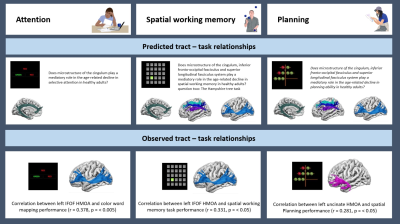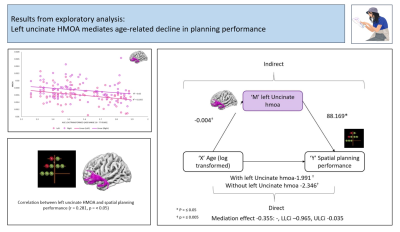Anoushka Leslie1, Ahmad Beyh1,2, Marco Catani3, Flavio Dell'Acqua3, Ceriesse Gunasinghe4, Henrietta Howells5, Richard Parker6, Andy Simmons1, Michel Thiebaut de Schotten7,8, Steve Williams1, and Mitul Mehta1
1Department of Neuroimaging, King's College London, London, United Kingdom, 2NatBrainLab, King's College London, London, United Kingdom, 3Natbrainlab, Department of Neuroimaging, King's College London, London, United Kingdom, 4Department of Psychological Medicine, King's College London, London, United Kingdom, 5Dipartimento di Biotecnologie Mediche e Medicina Traslazionale, Universita degli studi di Milano, Milano, Italy, 6IXICO plc, London, United Kingdom, 7Groupe d’Imagerie Neurofonctionnelle, Institut des Maladies Neurodégénératives-UMR 5293, Universite de Bordeaux, Bordeaux, France, 8Brain Connectivity and Behaviour Laboratory, BCBlab, Sorbonne Universities, Paris, France
1Department of Neuroimaging, King's College London, London, United Kingdom, 2NatBrainLab, King's College London, London, United Kingdom, 3Natbrainlab, Department of Neuroimaging, King's College London, London, United Kingdom, 4Department of Psychological Medicine, King's College London, London, United Kingdom, 5Dipartimento di Biotecnologie Mediche e Medicina Traslazionale, Universita degli studi di Milano, Milano, Italy, 6IXICO plc, London, United Kingdom, 7Groupe d’Imagerie Neurofonctionnelle, Institut des Maladies Neurodégénératives-UMR 5293, Universite de Bordeaux, Bordeaux, France, 8Brain Connectivity and Behaviour Laboratory, BCBlab, Sorbonne Universities, Paris, France
This study aimed to identify key frontal white matter tracts thought to influence a decline in executive function with age. Microstructural changes to the left uncinate demonstrated a small to medium indirect effect on age-related decline in planning performance.


